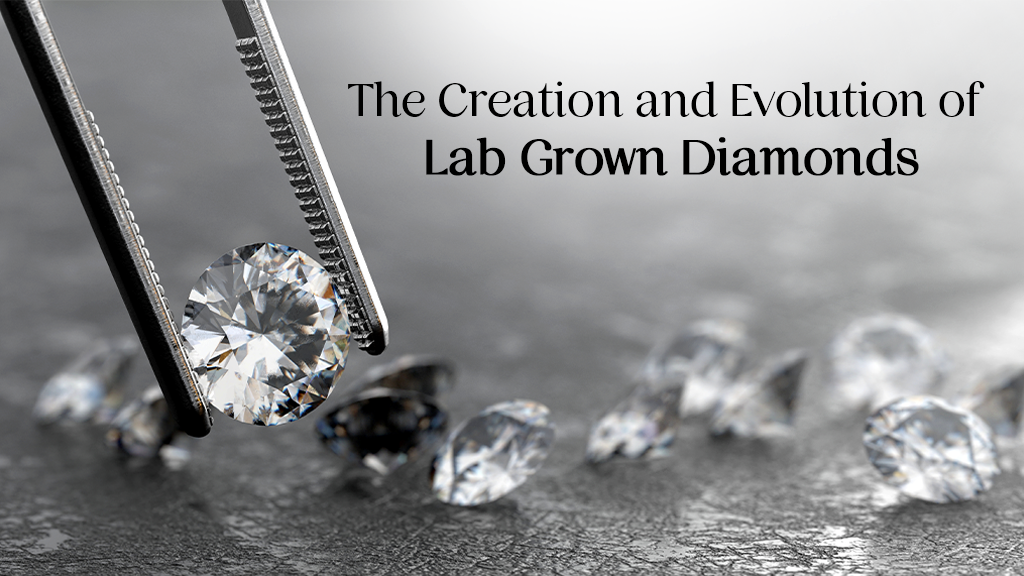Across the globe and since time immemorial people of all ages have loved diamonds. Girls adore their mothers’ diamonds since childhood, and men want to propose to their partners with the most beautiful diamond rings.
We at Jewelbox understand the value of diamonds and what it means to own one that lasts a lifetime. This naturally occurring, highly sought-after material is extremely popular throughout the world. However, there are multiple concerns surrounding natural diamonds such as miners’ working conditions and the steep price tag of naturally occurring diamonds. The need for an ecologically better alternative led to the creation of lab-grown diamonds.
Have you ever wondered how lab-grown diamonds came to be? Discover how lab-grown diamonds were born and how they continue to disrupt the diamond jewellery industry worldwide with Jewelbox.
Creation of Lab-grown Diamonds
When scientists discovered that naturally occurring diamonds are completely composed of carbon, it triggered the idea of attempting to create diamonds in a laboratory. As a result, multiple years of experiments and research were conducted starting in 1940. A decade of research led to the development of lab-grown diamonds, which today have revolutionised the global diamond market.
It was General Electric (GE) that created laboratory-grown diamonds in the 1950s using the high-pressure/high-temperature method (HPHT) after decades of work on this project. The first diamonds created in a lab, however, were too small for commercial purposes and along with this, there were other issues surrounding the newly discovered lab-grown diamond.
‘Although an incredible discovery, using such high temperatures and pressures to produce these stones was too expensive to compete economically with natural diamonds. Furthermore, these first gem-quality synthetic diamonds were often yellow and also contained many inclusions. Such stones wouldn’t receive high grades according to the colour and clarity standards for white or colourless diamonds’ (Source: IGS).
Advancements in the Industry
In spite of these issues, scientists from different countries, such as Russia, China, and the United States, continued to work on the production of lab-grown diamonds. They discovered the causes of the yellowing of lab-grown diamonds and made significant changes in the process. As a result of these changes, diamonds of superior carat, colour, and clarity were created in the lab.
It was at this point that lab-grown diamonds entered the commercial market for the first time. The lab-grown diamond that is currently available in the market has undergone multiple refinements over the years. There has also been a vast improvement in the process and quality of the diamonds being manufactured today.
‘More recently, another way to grow a diamond was discovered, called Chemical Vapour Deposition (CVD). This involves putting the seed in a sealed chamber filled with carbon-rich gas and heating it to around 800C. Under these conditions, the gases begin to “stick” to the seed, growing a diamond carbon atom by atom’ (Source: BBC).
This has resulted in lab-grown diamonds being produced more efficiently, cost-effectively and with a quick turnaround.
According to a report commissioned by the Antwerp World Diamond Centre, today, it costs $300 to $500 per carat to produce a CVD lab-grown diamond, compared with $4,000 per carat in 2008 (Source: AWDC).
This difference in cost has resulted in an explosive demand and the ever-increasing popularity of lab-grown diamonds across the world.
Conclusion
Lab-grown diamonds have taken over the diamond jewellery industry today. And for good reason! Not only are they optically, physically, and chemically identical to natural diamonds, but they are also almost 40% cheaper. That’s a win-win for all!
Furthermore, they don’t damage the ecosystem during their creation, nor do miners have to face extreme conditions to mine them from the surface of the earth. They can be produced in the lab under expert guidance and have no adverse effects on the environment.
These are some of the reasons why lab-grown diamonds are so popular worldwide. With continuous scientific advancements, the industry is constantly growing and expanding. We are thrilled to be a part of this revolution at Jewelbox! Join us on this journey by purchasing your very own lab-grown diamond at Jewelbox. With us, diamonds are for everyone.




